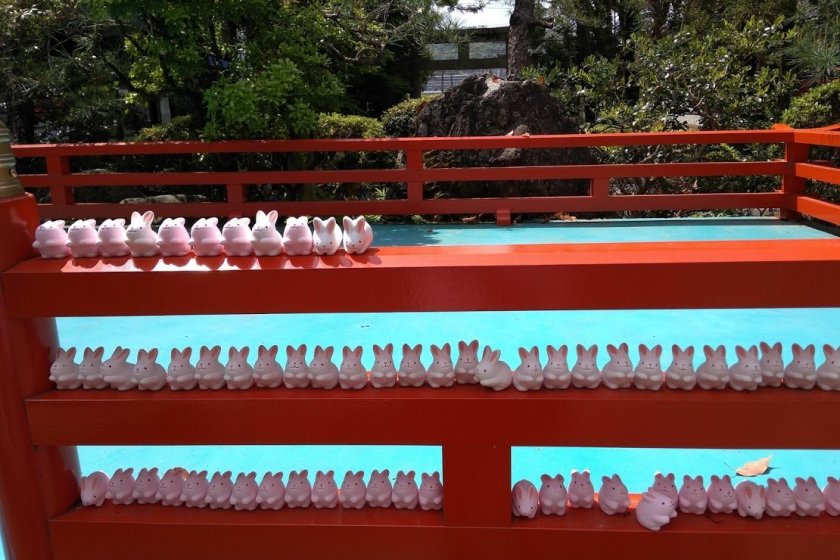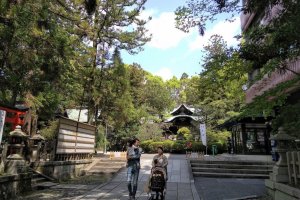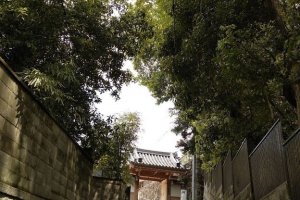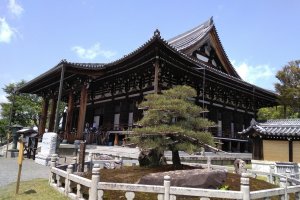Okazaki Shrine was built in 794 AD. Nearby Kurodani Temple, also known as Konkai-Komyoji, was built many years later, in 1175. It has to be just coincidence, then, that at Okazaki, life will be beginning. At Kurodani, it would have ended. These two temples close together represent the cycle of life.
At Okazaki, rabbits are the main motif, hopping around in stone, symbolizing fertility. At Kurodani, sad to say but good to know, despite impressive shrines, it is the dramatic groves of ancient graves. Okazaki Shrine didn’t start with fertility or the rabbits. The shrine’s first role by royal decree was protection of the Emperor and his subjects against evil, at the same time that Kyoto started in 794 AD.

Babies bounced on the scene in 1178 CE when the then Empress successfully gave birth. The god and goddess of happy childbirths were held to be resident at the shrine, especially since they were not exactly DINK types (double income no kids), having three daughters and five sons.
As rabbits were supposedly already inhabiting the shrine, they easily hopped into position as kami for the gods. Being themselves fecund, they were soon prayed to for fertility. Among the numerous stone rabbits abounding, as if still prolific, is a black bunny. Women throw water over it and rub its belly.
I also noticed, besides the usual wooden wish tablets, pink braided cloth circlets offered for safety, and safe delivery. I initially thought they represented the circle of life which begins with birth. And I thought there should be blue ones, too.

Kurodani’s history isn’t so warm and fuzzy. Honen, the founder of the Jodo sect, stayed at Kurodani, where his Pure Land Buddhism blossomed. Kurodani’s shrines are spread out over a complex. To get to the pagoda, you walk through the cemetery. The day I went the pagoda was under renovation, but I clambered up, anyway.
The graves are mainly old and crumbling, so old that even loved ones who once visited must have themselves also crumbled. Many are just stones, but by being at least still around, it is as though they are still part of life. So I think it’s good people pass through, so they are gone but somehow not forgotten. One tombstone in good shape which drew attention was of a woman or Buddha with what looks like a beehive around her head. I couldn’t find out the history.
The cemetery is supposed to be among the largest in Kyoto, if not the largest. The Kurodani area supposedly means literally “black valley”. But there was no feeling of doom and gloom. People were walking around with flowers and watering cans, or just walking.

Kurodani’s two storey Sanmon Gate makes quite an impact, at about 15 metres wide and 23 metres high. It has been acclaimed as the most outstanding wooden structure of the 20th century.
I didn’t really notice how high up Kurodani is until I found I could see Kyoto just below, where life is going on, just as at Okazaki next door, the rabbits will pass on messages to the higher ups and newborns will join the life force.































